
The Daursky Reserve is in the list of UNESCO World Heritage Sites in Russia. This is one of the few places where unplowed steppes still exist, and thanks to the Reserve employees’ efforts, almost all the species of rare animals inhabiting this area since ancient times have been restored. In addition, there are unique “pulsating” lakes that are full or almost completely dry in different periods. In spring and autumn, thousands of migratory birds can be seen on the Torey Lakes, many of which are included in the Russia’s and the World’s Endangered Species Lists (Red Data Books). And, finally, this is the real habitat of the Pallas’ cats - charming representatives of the cat family (also called manul cats or steppe cats). Since 2008, they have been favorite animals of the Runet, and after the appearance of the meme “Pet the cat!”, a real “manulomania” arose.
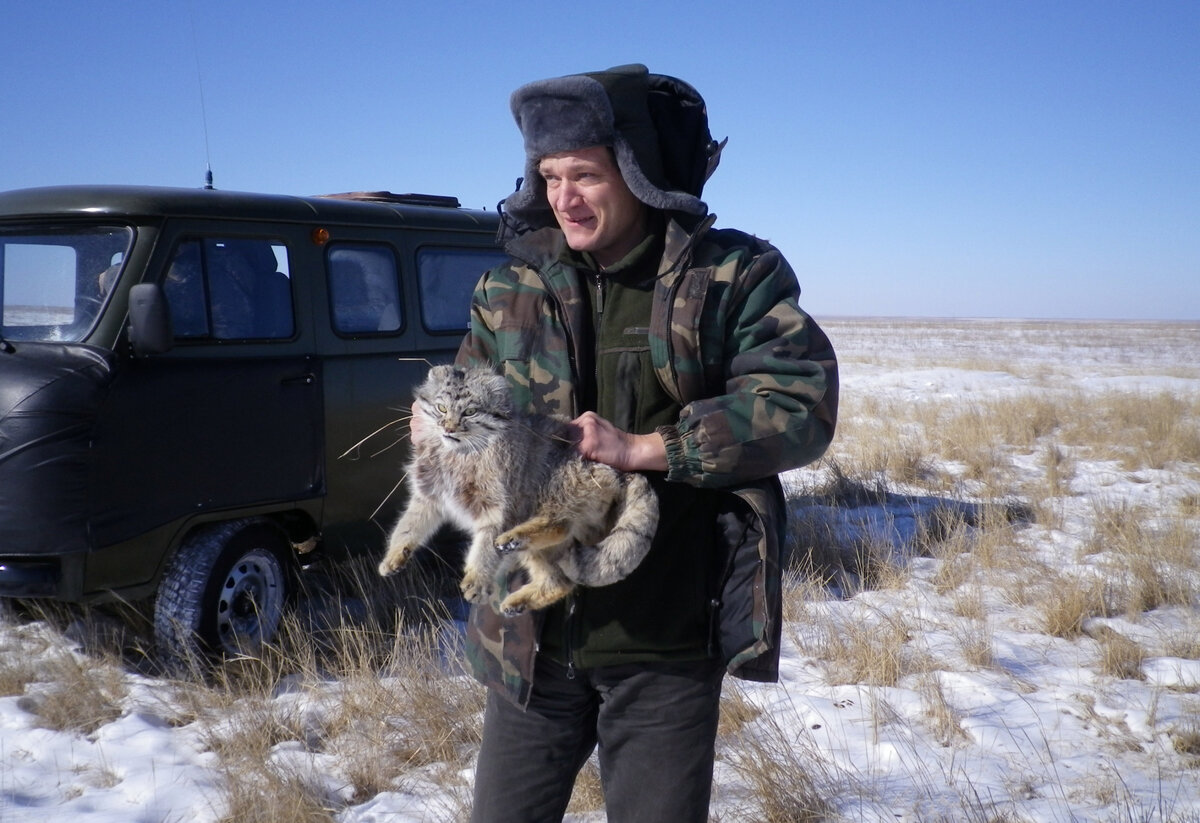
Vadim Kirilyuk, Leading Researcher of the Daursky Reserve, tells the EcoTourism Expert’s readers about the reserved steppe at the junction of the borders of three states. He has been working at the Reserve for over 30 years; he started as a junior research assistant, then became Deputy Director for science, and from 2014 to 2020, he was Director of the Reserve. He still continues his scientific activity. The main objects of his research are roe deer, Daurian hedgehogs, black-tailed gazelles (also called Mongolian gazelles, dzerens, zerens) and, of course, Pallas’ cats. Since 2001, he has also been the initiator and coordinator of the black-tailed gazelle restoration programme in Russia. He is also monitoring the situation regarding these hoofed animals in neighbouring Mongolia.
During his tenure as the director, the Reserve has gone through a stage of rapid development. Today, in terms of its nature conservation and regional effect, the Daursky Reserve with the reserves transferred to it is one of the best reserves both in Russia, and in Asia.
- The Daursky Reserve was established in 1987, in the Trans-Baikal Territory, at the junction of the borders of Russia, Mongolia and China. Since 1994, it has been a part of the Russian-Mongolian-Chinese protected area “Dauria”, the only trilateral nature reserve in Asia. And since 2007, the Daursky Reserve, its protected area and the part of the Dzeren Valley Federal Reserve, together with the Mongolian strictly protected area Mongol Daguur and the Ugtam Reserve, have been added to the list of UNESCO World Heritage Sites (as the Dauria Landscapes Site).
The Reserve is a cluster - one large area and several smaller ones - including the federal reserves “Tsasucheysky Bor (coniferous forest)” and “Dzeren Valley”. Now, the Reserve is being expanded, and we hope to increase its area by about 30 hectares. However, a rather large buffer zone has been for a long time around the Reserve. The traditional economic activities are carried out there, for example, haymaking, cattle grazing are allowed in it, but hunting and some other activities destructive to nature are prohibited.
In total, the Reserve controls about half a million hectares of land. More than 330 species of birds, 54 species of mammals, over 2,000 species of insects, and 530 species of plants are found here. And when visiting the Reserve, tourists definitely see many of its inhabitants, take pictures of them, watch their behaviour in their natural environment.

- What do you consider as your main attraction, besides the Pallas' cat, of course?
- These are the Torey Lakes that are the largest water bodies in the Trans-Baikal area, the remains of an ancient sea - about 150 million years old - that now are wetlands of international importance. The Lakes have an unstable water regime, the fluctuations in their level are caused by cyclical climate changes: the Lakes dry up and fill up with a cycle of about 30 years, they are also called “pulsating” lakes. However, these cycles are irregular, from 25 to 40 years, and it is the beginning of the wet cycle now, however, there is only 10-15 cm of water at the bottom so far. At the peak water level, the Lakes’ area reaches 850 sq. km, the Lakes are shallow and the water is warm.
At the beginning of the “filling” period, the streams during the floods caused by the two rivers flowing into the Torey Lakes collect the organic matters and minerals from the vast area of the steppe. In conditions of low starting salinity, shallow water and high temperatures, this gives a surge in life at all levels, from bacteria and plankton to fish and fish-eating birds. Thus, the biomass of goldfish at the maximum filling of the Lakes reaches 9,000 tonnes. This amount is comparable to the current reserves of the Baikal omuls, which is 7,500 tonnes only. The Torey Lakes give life and food to many birds of Eastern Siberia, supporting the existence of more than three dozen rare species.
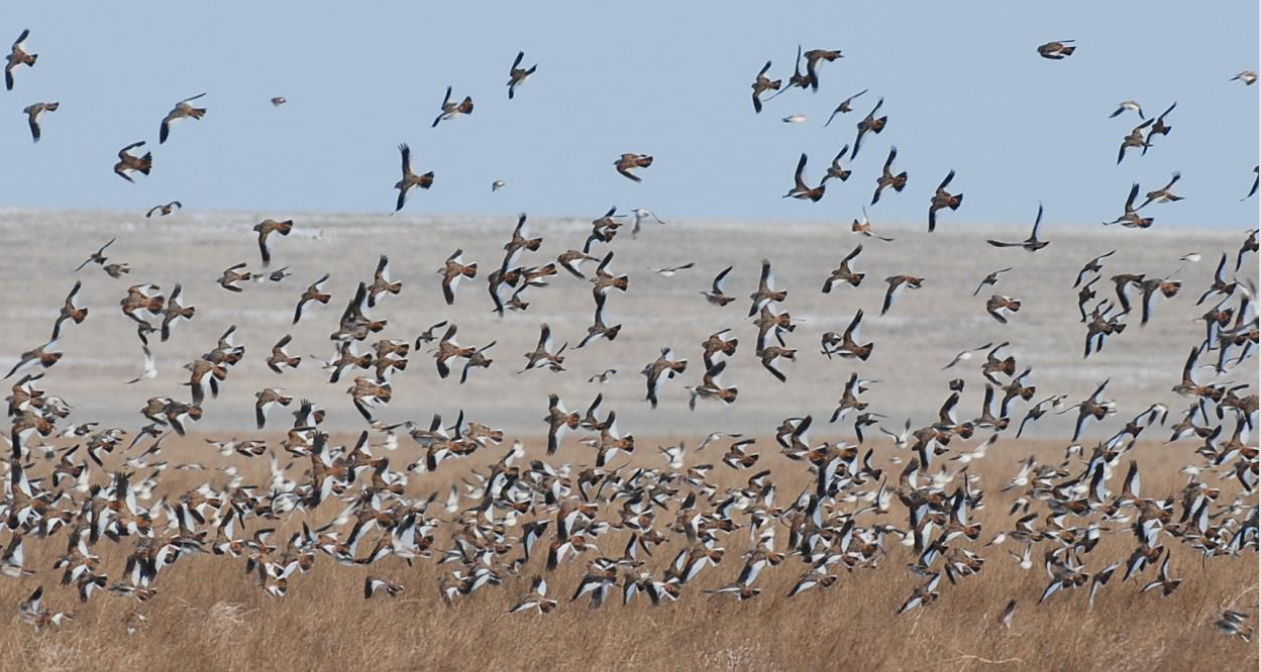
- What is their special feature?
- When the Torey Lakes dry up, all species of fishes die. Only the breeding stock of crucian carps survives in the river floodplains. In 10–15 years, the period of high water comes again, and the rapid fish reproduction begins. At this time, many species of birds feed on the Torey Lakes like fish-eating, herbivorous ones feeding on various invertebrates living in the water. Their number increases rapidly, they spread over a large area and can survive during the dry phase, even if their number decreases. They are waiting for the next high-water phase, and again there is a surge in the fish number.
The most powerful migratory routes of birds migrating from Southeast Asia are connected with the Torey Lakes, many species migrate through the Daursky Reserve to the taiga and tundra, and settle along the Arctic coast. Having flown halfway, they wait for a suitable weather for some time and feed on these Lakes. For example, the bean gooses gain weight for a month to be able to fly across the taiga and immediately start breeding, without waiting for food to appear in the tundra.
- What tours do you offer, what can your visitors see on each of the tours?
“We offer three main eco-routes. The first and the longest one is “Reserved Torey”. This tour is by car, the travellers can go by their own car or by the Reserve’s bus. It is 80 km from the village of Nizhniy Tsasuchey - where the Reserve’s central office is located - to the farthest distance they can get away from the village and it takes 8-10 hours by car.
The route is very interesting for birdwatching lovers and all naturalists. Here, you can watch the Demoiselle cranes any time, as well as hooded cranes, common (gray) cranes, Siberian white cranes, and almost always one can watch rare saker falcons. With the help of man-made nests, we restored their population, as well as the population of long-legged buzzards, which are very interesting to watch. There are a lot of sandpipers, especially during migration seasons.

In winter, huge quantities of Mongolian larks, up to 100,000 birds, are at the bottom of the Torey Lakes, which fly here from all the adjacent areas, including Mongolia and China, to feed on seeds of grasses grown on saline soils. It should be noted that as soon as the Torey Lakes are full, there are no such mass gatherings because the food disappears. Depending in which phase the Lakes are (dry or full), the surrounding flora and fauna change in their species’ number and composition. To my mind, the steppe is much more dynamic than taiga, it is a living world. By the way, we have made an observation tower that is at the edge of the reed when the Torey Lakes are full, and we laid a wooden path to it. From this tower, it is possible to watch the waterfowl colonies and nests.
The steppes around the Torey Lakes are the only place in Russia where the dzerens inhabit and reproduce, their herds are seen by the Reserve’s visitors. About 30 years earlier, we had no dzerens, I saw them and manul cats in Mongolia for the first time. In the 1990s, I did not even dream that we would be able to return this beautiful wild animal to our Trans-Baikal nature, and now they are common animals that sometimes trouble local residents and the authorities.
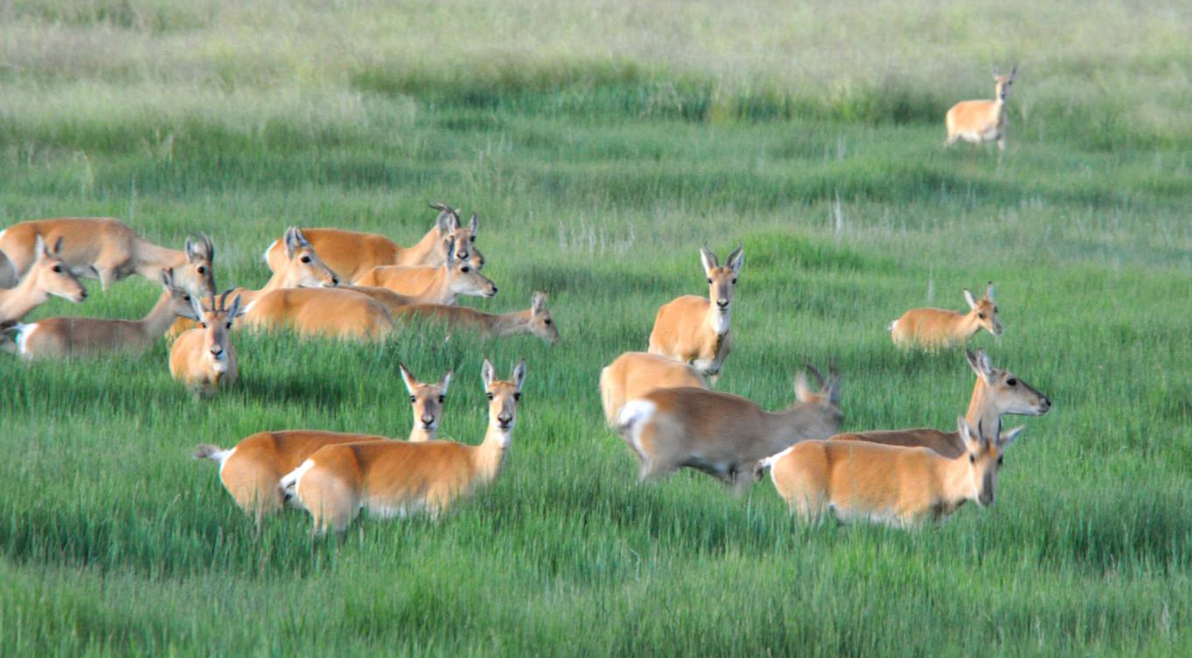
- It turns out that the dzerens, the black-tailed gazelles, returned to Russia quite recently?
- They entered our area en masse in January 2001. They appeared not only in the Reserve, but along the entire 500-km Russian-Mongolian border. Difficult wintering conditions made about 70,000 black-tailed gazelles to come to us. The poachers met the first attempts of mass relocation of the dzerens to Russia fully armed. The meat of these animals was sold in roadside cafes and used to feed dogs. And the dzerens were shot everywhere as the poaching flourished. So, we gave the poachers the first fight and detained about a dozen poachers’ groups.
In 2008, a new large wave of these animals came to our border in late spring. The dzerens tried to get through the barbed wire, injured themselves and died. At our request, a specially set up committee applied to the Border Department in Moscow. And the permission came from Moscow to raise the barbed wire. This is how another wave of black-tailed gazelles came to our country, which prompted us to establish the “Dzeren Valley” Reserve in 2011. Gradually, the animals migrating only for the winter realized that there is more food and safer in Russia. Thirty years have passed since the birth of the first black-tailed gazelle, and there are about 30,000 local animals in the Trans-Baikal area now that do not go anywhere.
The rainy years begin. The feed situation in Mongolia will improve and winter migrations will subside. We will observe our Trans-Baikal black-tailed gazelles until the next dry phase. I hope, we have not just a “pulsating” area where the dzerens enter temporarily in order to leave again for a long time, but it is a zone where the dzeren local groups live permanently. If this is confirmed, I will consider my mission successfully completed.

- When is the best time to observe the black-tailed gazelles?
- Both in winter and summer. In July, the tourists can watch newly born dzerens walking in small herds, we willingly show them, especially to the groups of tourists with children. In winter, these animals look different, fluffy, and bigger - this allows them to easier endure our frosty weather with minus 40-45 degrees Celsius. At the end of December, they start rutting, male animals scream to attract the female animals, clouds of steam burst out of them when they scream, and the steppe is filled with these barking sounds. It’s time for vivid impressions and good photos.
- In addition to endless steppes, they say, there is a unique forest oasis.
- This is the route “Tsasucheisky Pine Forest - the Pearl of the Steppe”. In the Southeastern Trans-Baikal area, there are no analogues to this unique pine forest. Until now, the origin of this forest “island” surrounded by steppes on all sides remains a mystery.
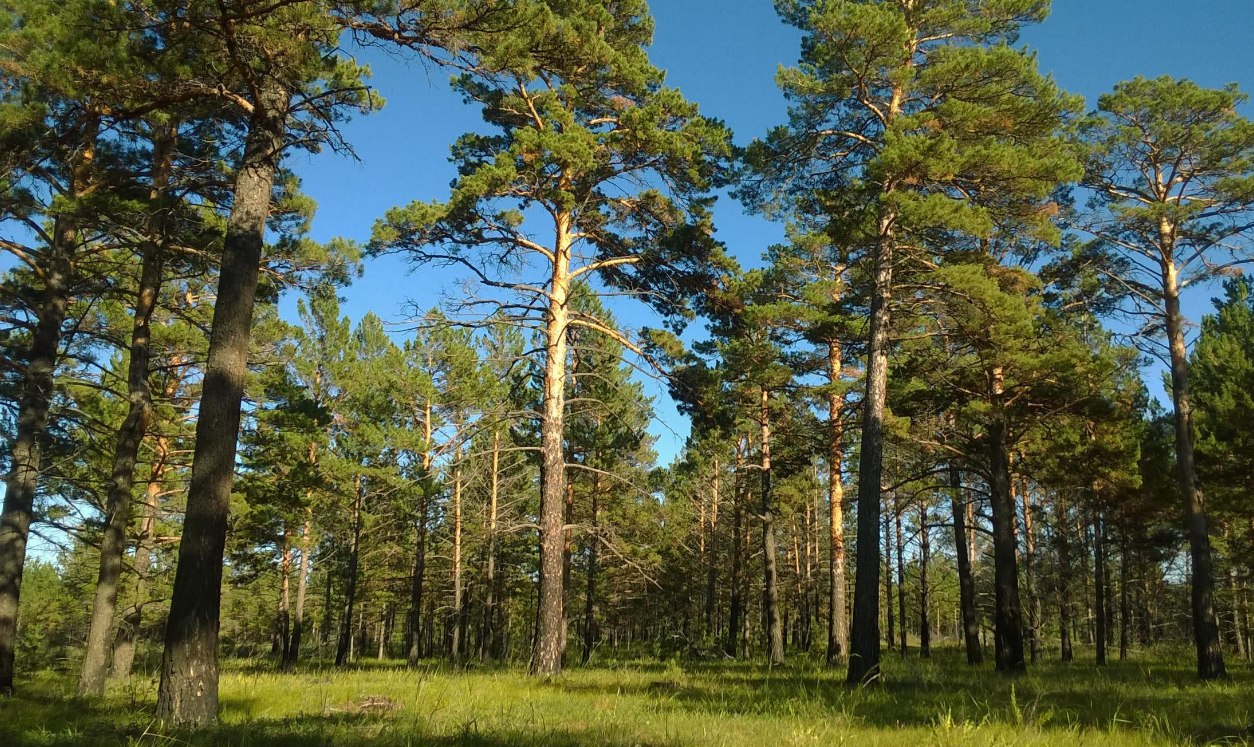
The dominant trees of the pine forest are the Krylov pines well adapted to the harsh Trans-Baikal area climate. During the excursions, the legends are told about the origin of the pine forest, and the visitors also watch the waterfowl and near-water birds on the shore of Lake Bolshaya Yaksha located on the southern fringe of the pine forest. The black storks, long-eared owls, goshawks, and other rare birds nest here; on the southern fringes of the Tsasucheisky pine forest, it is possible to watch bustards.
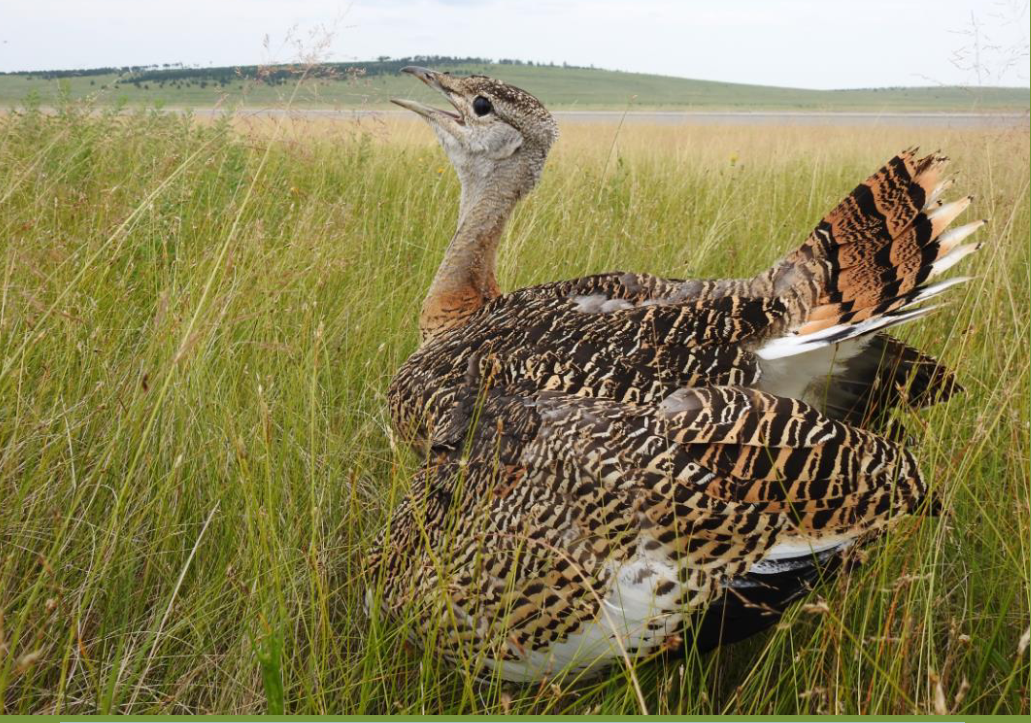
Our special pride is more than 12,000 Siberian roe deer, which are numerous in these places, and more recently, Far Eastern red deer have appeared. I hope that with the onset of a wet period and the appearance of watering places, these animals will stay in our Reserve. By the way, this route also provides for “water procedures” - there are places for swimming in freshwater lakes. This route is used for bus tours as well, it is 36 km long, the excursion time is 5-7 hours.
- What mysterious herd do you suggest visiting? And where do the Pallas’ cats live?
- This is our third eco-route to the solid rock Adon-Chelon (Buryat language - a herd of stone horses). It is a bus or walking route and the longest one as the farthest distance from the village of Nizhniy Tsasuchey to this point is 120 km. The travellers see bizarre rocks, looking like fabulous giants, the existing or extinct animals, ruined castles and towns. The locals consider this place to be holy; on the highest mount of the Tsagan-Obo (White Mountain), there is an ancient shamanistic ritual complex consisting of twelve stone hemispheres surrounding the central stepped structure. This is a very popular place where people pray and sacrifice to the spirits of the area to gain their protection while travelling or living in the area.
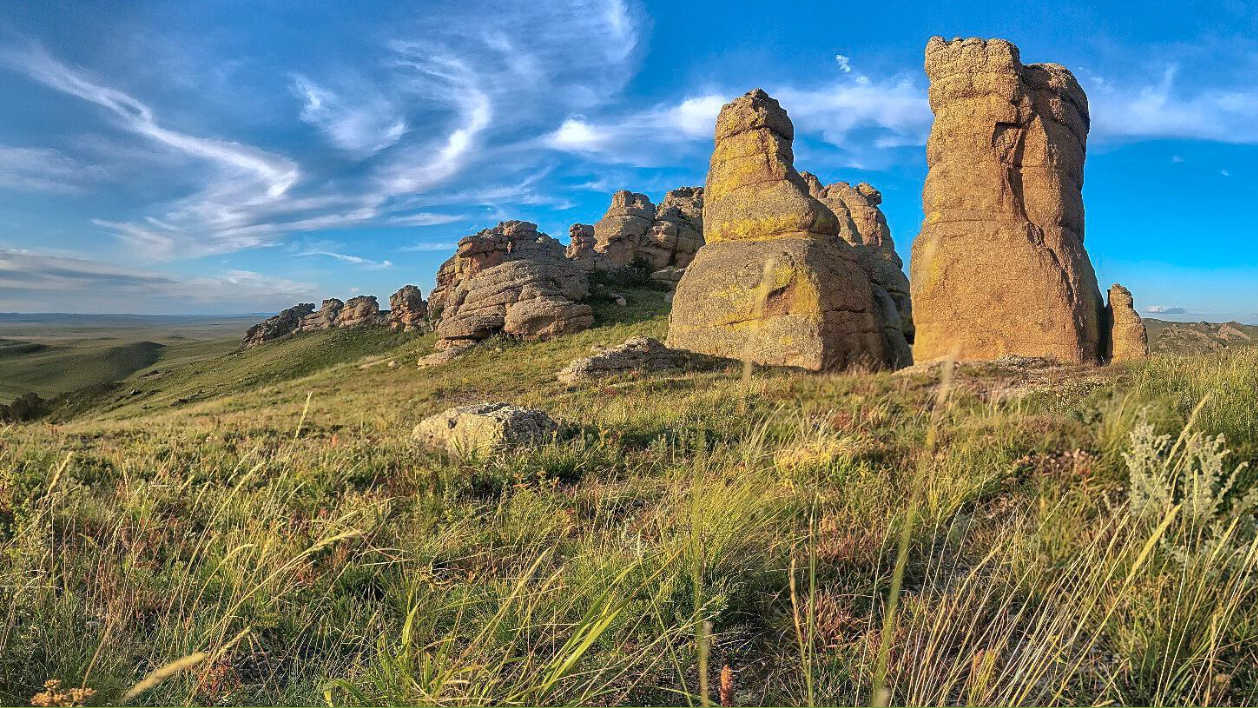
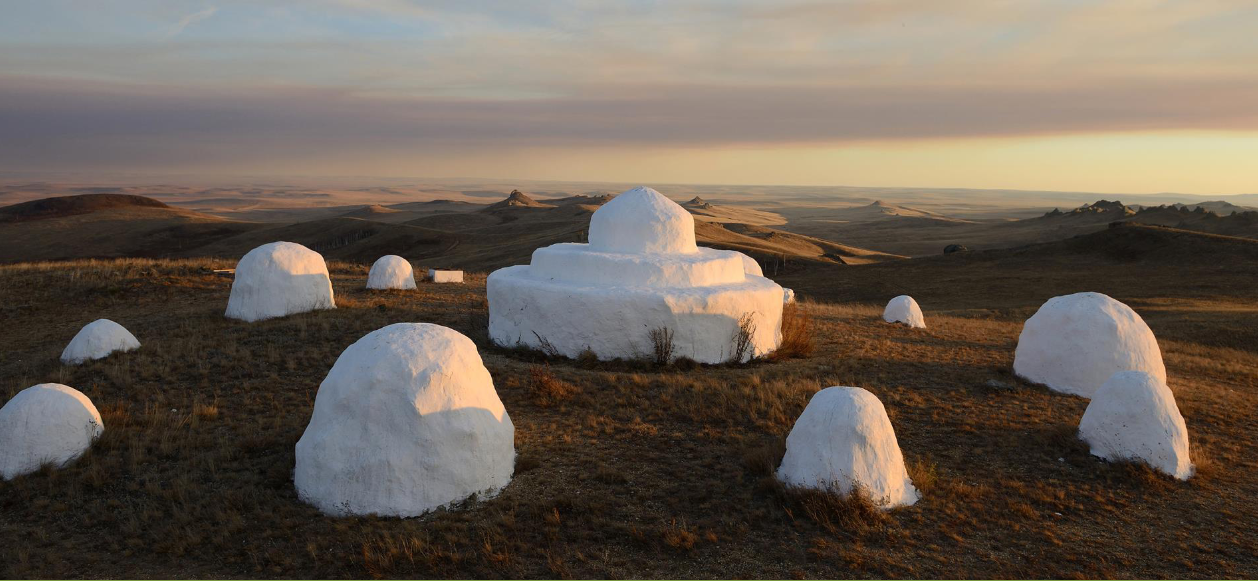
Most of the way, the visitors drive along the picturesque steppe, taking pictures of animals, birds, and vast picturesque expanses through the windows of the vehicles. On the route, there is a 3.5 km long ecological trail “Adon-Chelon - a Steppe Miracle”, and a walking tour lasts 3 hours. However, I assure you, it is better to take pictures of the most interesting places through the bus or car window.
- Is there really no way to get closer to take photos of the wildlife?
- While walking, you do not see so many animals and living creatures as you see from the window of a bus or car. Roe deer, black-tailed gazelles, marmot-tarbagans are best seen from a window, on the move or when slowing down. The animals are more afraid of humans than vehicles. If a car does not drive after them, many animals get used to the strange clumsy “animal” very quickly and do not run away when it appears.
- And why in other countries, for example, in Africa or in the United States, deer walk among people in parking lots, but we do not see this in our country?
- First, because there are no predators - and this is the most important factor. Second, the animals are quite intensively hunted illegally all year-round in the adjacent areas. We have more or less got the situation under control around our Reserve, approximately within a radius of 30-40 km, but in the 1990s, poaching was common. And many of the animals either “remember” those years, or are already afraid of humans at the level of genetic memory. As for predators, we have a full-fledged natural complex, the largest predator is a wolf, and the wolves’ number is not regulated in this area. There are also many birds of prey that hunt the tarbagans as their number became high. So, we have all the elements of the trophic pyramid.
- Isn't the number of wolves too high and aren’t the wolves too aggressive?
- There is a certain limit to the number of hoofed animals, at which the number of wolves practically does not affect them. And wolves have their own problems - just recently there was an epidemic of scabies, up to half of the wolves and 50-80% of the fox population died. And two years ago, rabies became the cause of the mass death of wolves. Wild animals experience the same epizootics and epidemics as the humans do due to coronavirus. Moreover, due to warming, climate change, the areas of many diseases are expanding.
- What kind of animals can be seen here?
- In the picturesque residual 10- to 30-meter high mountains, life is in full swing, tarbagans run briskly. We dream, as soon as a normal communication is established with this remote area, we will make live streaming of these amazing rodents of the squirrel family.
It is also an important habitat for the Pallas’ cats, which are often captured by the cameras thanks to an wide network of camera traps for observing the life of the inhabitants of these mountains. We have a lot of photos, especially a good series of pictures of “mother” Manula Mokhnataya (Fluffy) that recently brought five kittens to one of the rocks where the camera traps were installed.
- How did you start studying Pallas' cats?
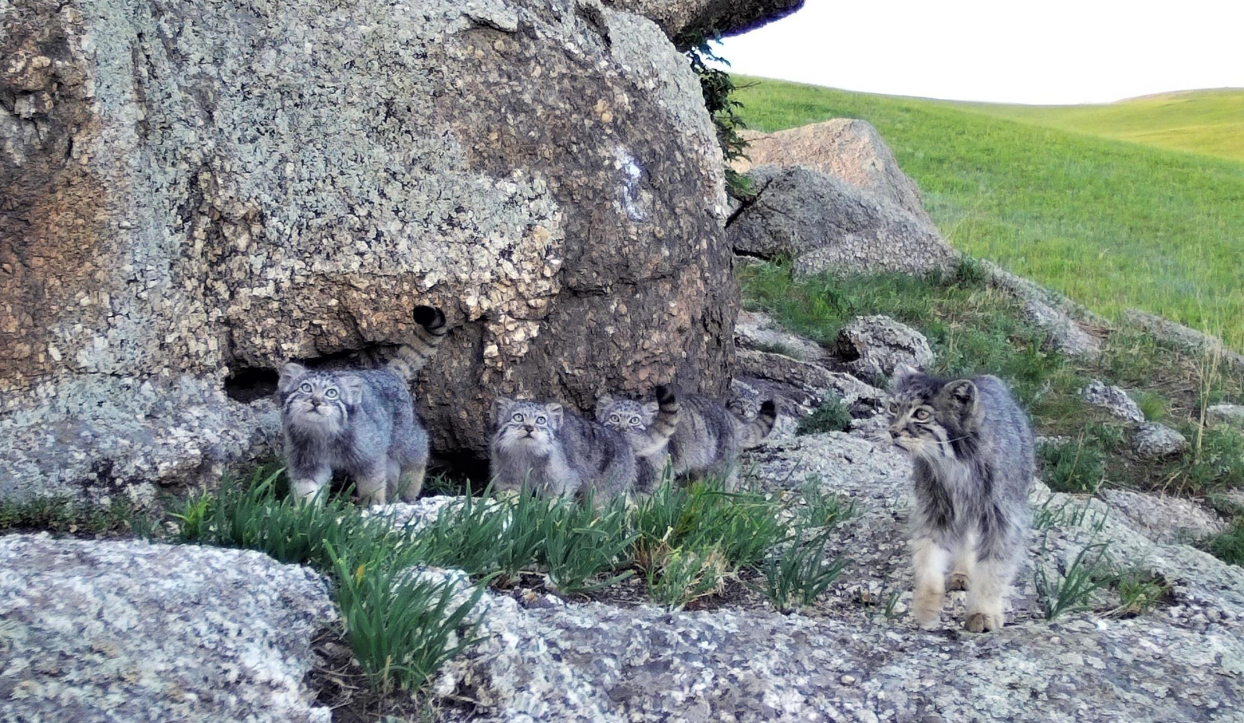
- I wrote my thesis on the conservation of rare species listed in the Red List of Threatened Species. We have four of them: Daurian hedgehogs, Pallas’ cast, black-tailed gazelles and Mongolian marmot-tarbagans. It was difficult with the Pallas’ cats, their population decreased and I could not find a single one for a long time. I saw the first Pallas’ cat in Mongolia in the winter of 1994.
The manuls, or Pallas’ cats, are one of the least studied wild cats in the world. Within Russia, they inhabit the Trans-Baikal area, Buryatia, Tyva and Altai. They are listed in the Red Book of the Russian Federation, in the IUCN (International Union for the Conservation of Nature and Natural Resources) Red List and in Appendix 2 of the CITES Convention.
- How much has their population grown during your work?
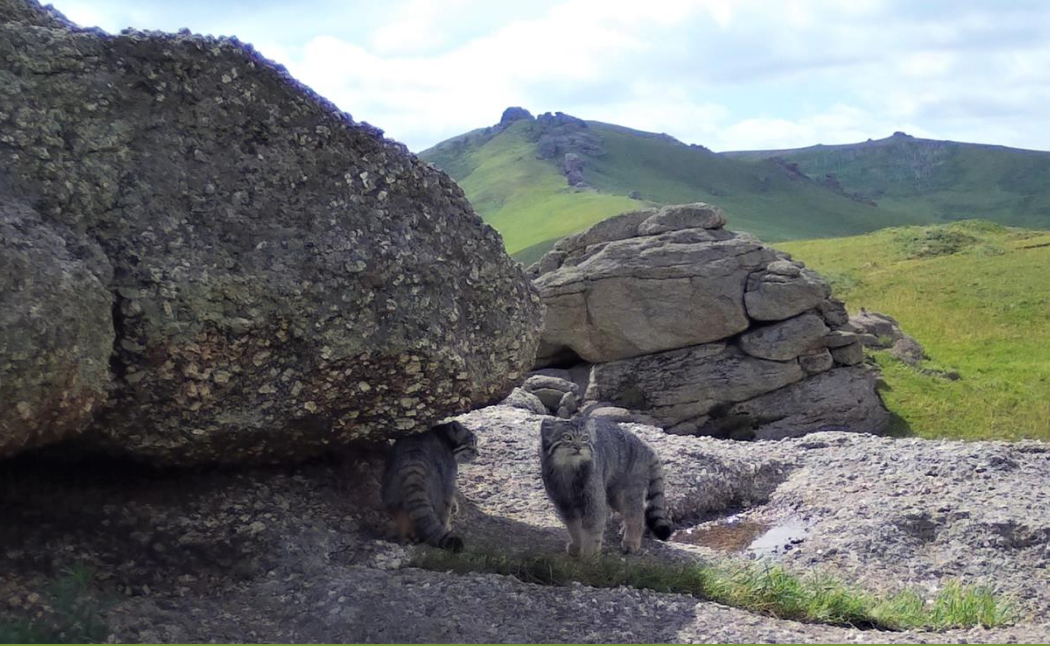
- At present, there are about 5,000 to 10,000 Pallas’ cats in the Trans-Baikal area. Their numbers fluctuate greatly from time to time. This is a natural dynamics associated with food availability and harsh winters. For example, in 2010, there were about 13,000 Pallas’ cats. And because of the difficult wintering of 2015-2016, their number decreased to just 4,000. Every now and then, people called us and said that a very weak Pallas’ cat had come to their livestock camp or to the outskirts of the village. We saved seven cats. We had just received a grant from the Russian Geographical Society and were able to prepare enclosures and comfortable rehabilitation boxes for them. We fed them, gave them glucose injections and released them into the wild in early April.
In general, for animals in trouble, it would be good to arrange local rehabilitation centres at the reserves, where they could be cured, supported and released back into the wild.
- Why were there so few Pallas' cats in the first years of the Reserve's operation?
- At first, they were often killed by the dogs guarding the livestock camps. The animals also suffered from night poaching. Within ten years, we have managed to curb nighttime poaching. There is still daytime poaching in the taiga, but we have coped with the nighttime one in the steppe.
- What are your plans for the development of the Reserve in the nearest future?
- My dream is to return one more species from the Red List of Threatened Species to this area - the argali mountain sheep. Two hundred years ago, the habitat of argali stretched from the foothills of the Altai Mountains to the mountains of the Trans-Baikal area. In 1956, the last argali mountain sheep was shot, and they disappeared en masse a hundred years ago. In 1932, there was a catastrophic amount of snow, and a lot of argali died out that winter, and later on, people killed the remaining ones. Nowadays, we are carrying out preparatory work for their reintroduction. Today, it is necessary to conduct an analysis of the substance of their horns found in the former habitats of the species in our region to understand which subspecies inhabited the area, the Gobi argali or the Altai one, and after that, we can bring the same argali species that have lived here from time immemorial.

- And why is the area called Dauria?
- Dauria is named after one of the Mongol tribes, the Daurs (also, Dahurs), who lived here in the 6th-9th centuries. Later, the Tunguses came here, and in the 17th century - the Buryats. Since the 1650s, the Cossacks began to force the Daurs to pay yasak (tax) to the Russian tsar. Among the Russian settlers, there was a legend about the infinite riches of this area. The nomadic people left for Manchuria. And today, it is the only region in the world where all the forest and steppe landscapes have been preserved in their pristine form. In one place, the Siberian taiga and the Mongolian steppe converge, as well as the rocks and flat land, summer heat and permafrost.
